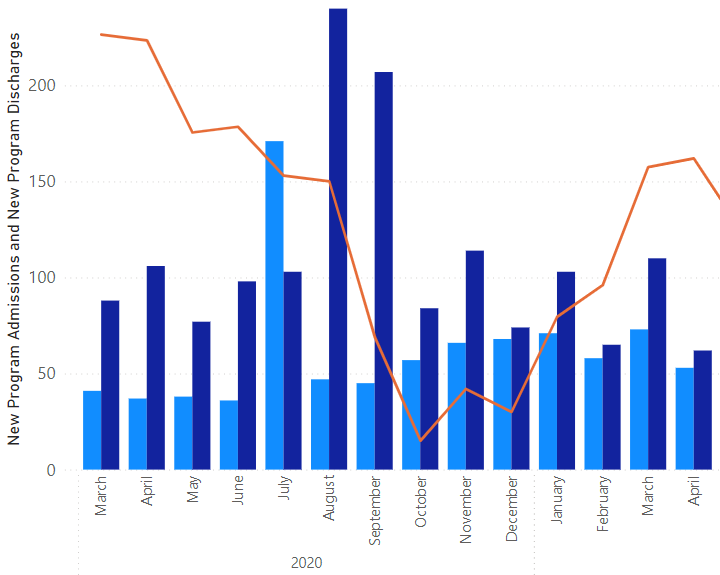
You’ve got dashboards. You’ve got exports. You’ve got reports. But do you have answers?
If you’ve ever chased down five different reports just to solve one operational issue and still walked away with more questions than clarity, you’re in good company. Behavioral health teams are drowning in data, yet starved for insight. There’s no shortage of numbers. What’s missing is the planning and structure that make those numbers meaningful.
Let’s be clear: this isn’t a technology problem. It’s a thinking problem. And good thinking starts with one deceptively simple question: what decision are we trying to make?
This post is a practical guide for behavioral health leaders who are ready to turn raw data into real direction. Not eventually. This week.
Start with the Decision, Not the Dashboard
It’s tempting to begin with what’s easy to measure. Logins. Encounters. No-shows. Authorizations. Most EHRs and practice management systems offer a dozen pre-built reports that look impressive but rarely answer the question you’re actually asking.
That’s because most data tools are designed around features, not around your daily operational struggles. So instead of starting with the tool, start with the pain point.
Your team probably already knows what’s not working. Maybe your waitlist keeps growing but no one can agree on why. Maybe new intakes are inconsistent, and too many clients disappear after the first appointment. Or maybe you’re constantly reacting to staff burnout, but can’t quite pinpoint whether it’s a caseload issue, a workflow gap, or just poor visibility.
These aren’t just technical challenges. They’re behavioral, systemic, and human. And they’re exactly the kind of questions that analytics should help you answer.
Once you’ve named the problem, sanity-check it. Ask three questions before you spend a second building anything: Is this tied to an organizational priority? Can we get the data and trust it? And will someone act on the answer?
If any of those answers is no, stop right there. Good analytics never start with a report. They start with a question that matters, an outcome that’s urgent, and a team that’s ready to respond.
Build with the People Who Use It
One of the most common mistakes we see? Dashboards built in a vacuum. Somewhere in a back office or a vendor shop, well-meaning analysts crank out reports meant to help clinicians and managers. But when those tools finally go live, they sit unused. Or worse, they mislead.
Why? Because the end users were never involved.
Your frontline staff already ask important questions every day. They just don’t always use technical terms when they do it. A care coordinator might ask how many Medicaid authorizations are expiring this week. A supervisor might want to know which clinicians are nearing productivity targets. A billing lead may be trying to figure out why documentation errors keep delaying claims.
Those are data questions. And if we design tools to answer them clearly, quickly, and within the systems they already use, we’ll get adoption. If we don’t, we get dashboards that look good in demos but gather dust.
The best solutions come from co-design. That means pulling in users early, building around their needs, and testing in real-life conditions. It means keeping interfaces simple and building right into workflows. No one should need to log into a third platform or download a monthly report just to do their job. If data isn’t integrated into the daily routine, it won’t make an impact.
Define the Finish Line and Stick to It
Once the tools are live, how do you know they’re working? You don’t, unless you define success up front.
We’re not talking about vague aspirations like “better insights” or “more transparency.” We’re talking about concrete, measurable goals. For example:
- Referral-to-appointment time drops by 25 percent.
- Supervisors discuss productivity metrics at every weekly huddle.
- Billing corrections due to documentation errors decrease by half.
When you set clear goals, it keeps your build lean and purposeful. You don’t end up creating a dozen extra metrics “just in case.” You stay focused on what matters.
And here’s something that often gets overlooked: it’s okay to shut down a report that isn’t helping. In fact, it’s wise. Every dashboard you maintain costs time and attention. If it’s not driving action, it’s clutter.
Good analytics are not just about adding. Sometimes they’re about subtracting.
Work with People Who Understand Behavioral Health
There are plenty of companies selling data tools. But behavioral health is different. The work is nuanced. The systems are complex. With people’s lives at stake, the stakes are too high for generic solutions.
You don’t need a vendor who dazzles with dashboards. You need a partner who understands how your workflows operate, where your teams feel pressure, and how your clients move through the system. Someone who knows that data without context is dangerous, and that metrics only matter if they lead to change.
At Xpio Health, we help behavioral health organizations get clarity. We don’t just build reports. We ask questions, translate needs, and create solutions that serve the people doing the work. Our new Xpio Analytics platform is designed with that purpose in mind. It’s for organizations who are ready to use their EHR data to solve real problems, starting now.
What’s the next operational decision you need to clarify with data? Let’s find the answer together.
#BehavioralHealth #PeopleFirst #XpioHealth #HealthcareAnalytics #DataThatWorks #OperationalExcellence #EHROptimization




